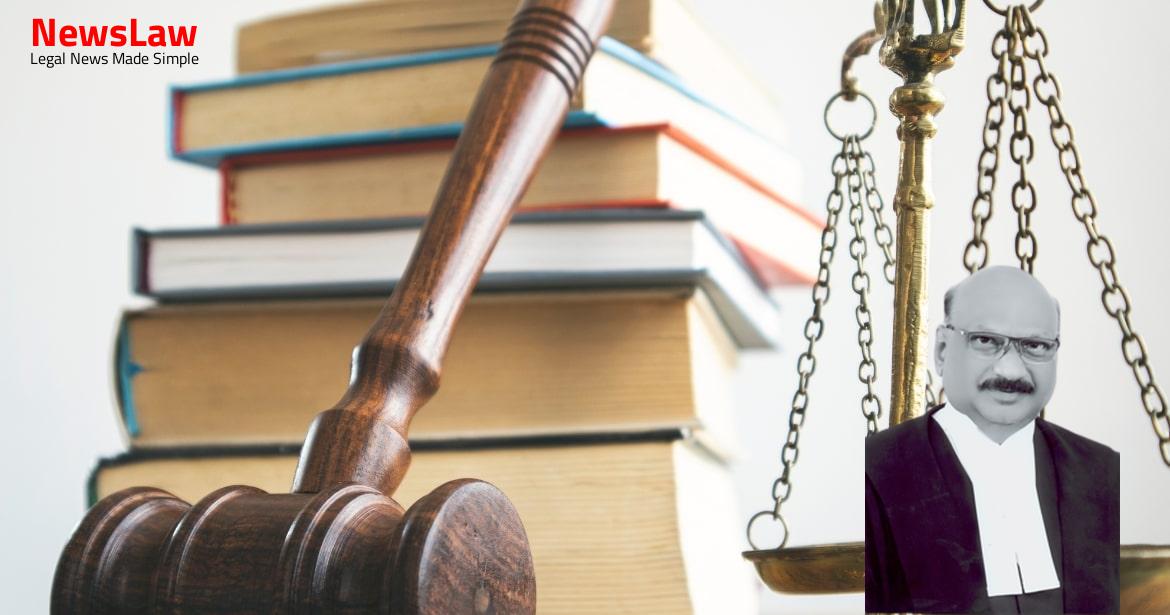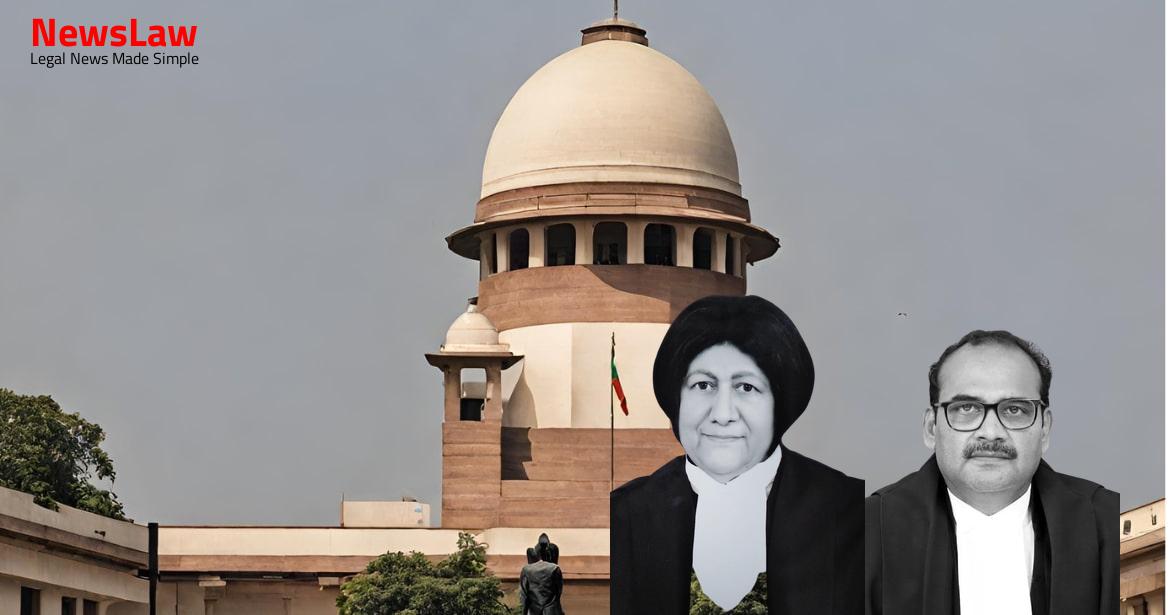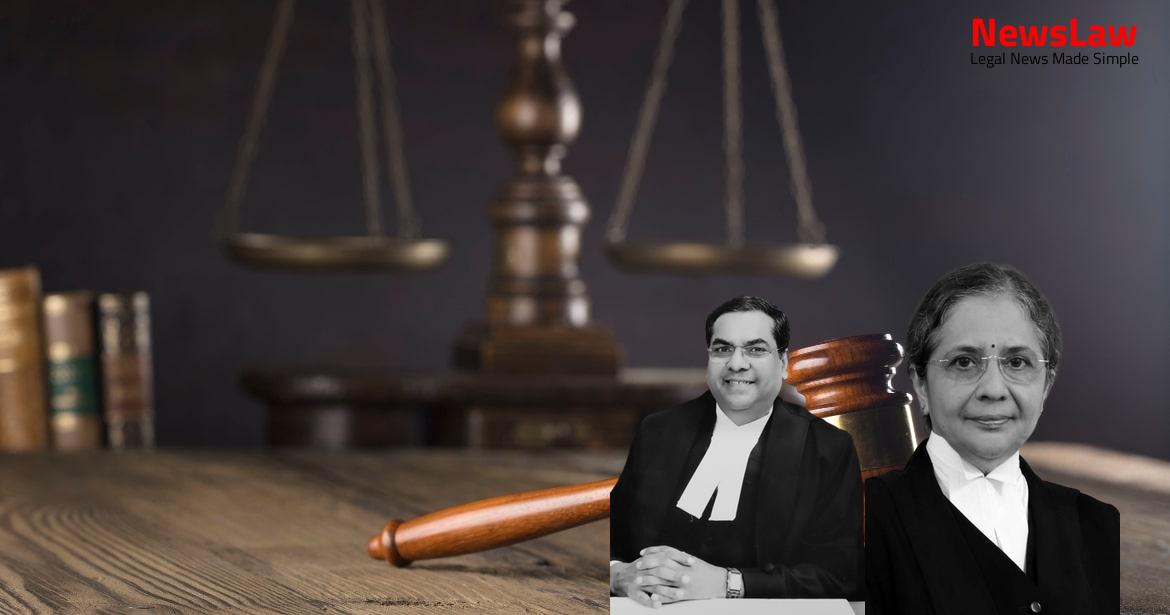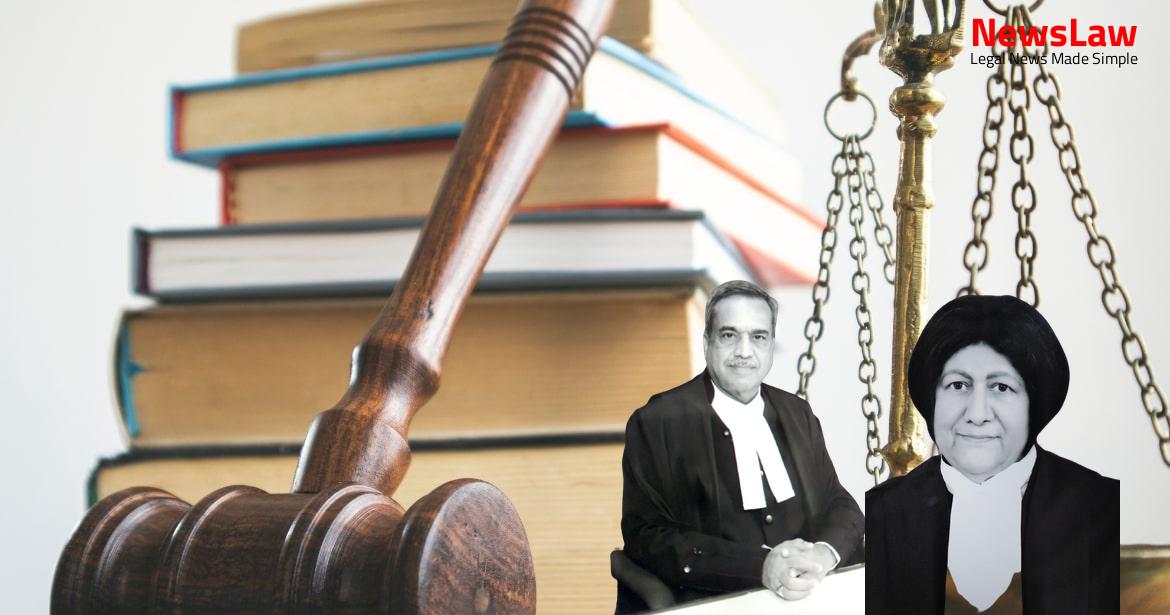Explore the intricate legal analysis of a property partition case where the High Court issues new directions regarding the common areas of the property. Discover how the courts interpret and resolve disputes related to common areas in the context of property partition. The judgment emphasizes the importance of considering evidence and material placed on record when addressing disputes over common areas.
Facts
- The High Court set aside the Trial Court’s judgment in part regarding the sale of the second floor and terrace rights.
- The High Court issued new directions regarding the common areas of the property.
- Specific directions included: (i) denial of right to use the small driveway on the ground floor to the appellant/defendant, (ii) granting easementary right to use certain water pipes and booster pump to the appellant/defendant, (iii) allowing the respondent/plaintiff to use part of the landing of the staircase on the second floor.
- The High Court disposed of the appeal based on the new directions and left the parties to bear their own costs.
- The judgment emphasized that both sons cannot sell their share in the property without each other’s consent.
Also Read: High Court Restores Tribunal’s Compensation in Fatal Accident Case
Issue
- Appellant-defendant claimed partition of the second floor and terrace of the property.
- Trial Court framed issues regarding the partition of the second floor and terrace.
- Trial Court rejected the appellant-defendant’s claim for common areas as stated in the written statement.
- Trial Court accepted objections of the respondent-plaintiff regarding the Report of the Court Commissioner.
Also Read: Interpretation of Promotion Criteria in University/College Setting
Arguments
- Sri Vikas Singh, representing the appellant-defendant, argues that the Trial Court and First Appellate Court erred in deciding the rights of parties regarding common areas on the ground floor, as the suit was initially focused on partitioning the second floor and terrace rights.
- The appellant-defendant claims entitlement to 50% of the common areas on the ground floor, as the entire property is divided equally between the parties.
- On the other hand, Sri P.S. Patwalia, representing the respondent, argues that the appellant-defendant first raised the issue of common areas in the written statement, leading to the Trial Court framing the dispute.
- Limited rights granted for maintenance of the booster pump/motor in the ground floor
- No further rights conferred on the appellant-defendant in the common areas of the ground floor
Also Read: Judicial Review in Drug Possession Case
Analysis
- The appellant-defendant cannot claim any right to use the driveway from the front side of the property.
- The suit property is situated on a corner plot with a main road on one side and a side lane on the other side, which abuts a park.
- Both parties are claiming rights to the property based on a Will dated 01.2005.
- The Trial Court framed an issue regarding the appellant-defendant’s claim of common areas in the property.
- The High Court noted that a driveway on the ground floor of the property would typically be considered a common area.
- The High Court has ensured necessary access to the pipes and booster pump/motor in the rear courtyard for the appellant-defendant.
- When a dispute of common areas is raised and considered by framing an issue based on pleadings and evidence on record, the appellant-defendant cannot claim that the directions issued in the judgment exceed the scope of the suit.
- Once a dispute of common areas is raised, the appellant-defendant cannot argue that the Trial Court and the Appellate court exceeded the scope of the suit in issuing directions for the common areas.
- Findings are invited when raising a dispute of common areas; therefore, it is not valid for the appellant-defendant to plead that the courts exceeded the scope of the suit in issuing directions for common areas based on the evidence and material placed on record.
Decision
- The judgment and final decree for partition, as ordered by the Appellate Court, are in accordance with evidence on record.
- There is no merit found in the appeals to interfere with the judgment and decree.
- The Will dated 27.01.2005 by late Smt. Krishna Sethi reflects her wish to avoid disputes among her legal heirs after her demise.
- The Will emphasizes unity among her children and their families, following the example set by her and her husband.
- The appeals are dismissed with no order as to costs.
Case Title: SAJAN SETHI Vs. RAJAN SETHI (2020 INSC 249)
Case Number: C.A. No.-001899-001900 / 2020



